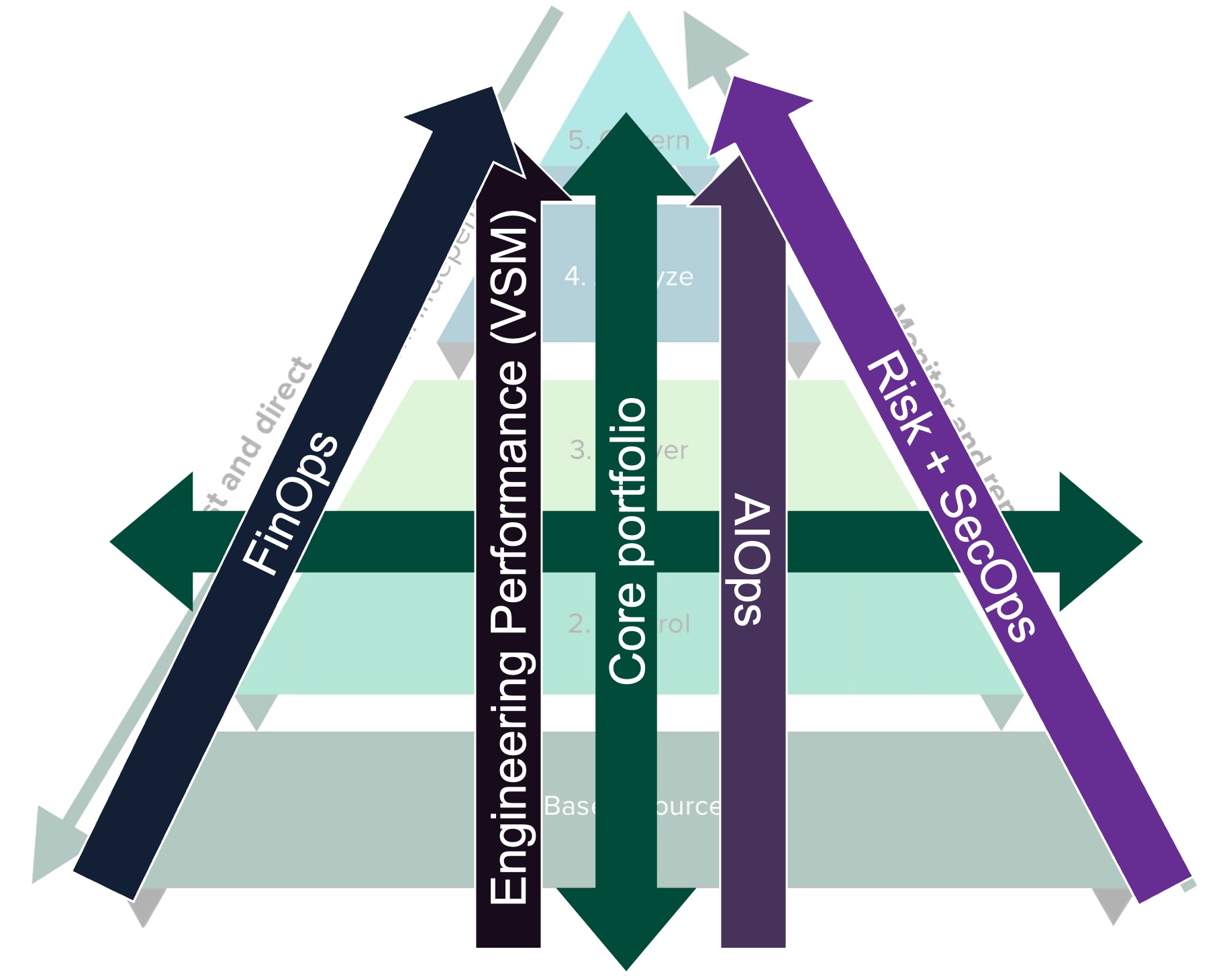I’m happy to announce the current publication of the Forrester IT Administration Methods Structure.
IT (info expertise) makes use of all kinds of techniques to successfully run itself. Not like different enterprise areas, the self-discipline of IT administration nonetheless depends on level, best-of-breed options, which require intensive integration to make all of them work collectively. This foundational report presents a brand new layered structure for understanding the techniques used for safe IT supply and discusses how this structure will evolve sooner or later. This new report is a companion structure to the Forrester Reference IT Functionality Map. We keep these two completely different views, in step with structure finest practices:
The potential map exhibits your IT administration considerations from an working mannequin perspective. On the whole, you personal the event and evolution of those capabilities — they don’t seem to be merely a matter of sourcing.
The techniques structure classifies what you’ll be able to supply out there to help your IT administration capabilities, helping you with managing this complicated portfolio and figuring out key integration areas and techniques redundancy.
A key scoping boundary is between layer 1 and a couple of. Many of the multi-trillion international IT funds is spent at layer 1, representing the precise computing assets below administration. Layer 1 will not be in scope for the IT administration techniques structure, per se. The techniques in layers 2–5, whereas quite a few and representing billions of {dollars} economically, are orders of magnitude much less when it comes to the general share of the worldwide IT market. The layers are outlined as follows, with instance techniques (see the report for full system classifications):
Layer
Description
5. Govern
That is the layer at which IT investments are directed, monitored, and evaluated on the highest enterprise degree and dangers are tracked and managed. It contains strategic portfolio administration, enterprise structure, danger administration, and IT monetary administration.
4. Execute
Work is outlined, deliberate, and tracked right here at the next degree, roughly aligned to a “crew of groups.” That is the place funds are tracked in addition to higher-order considerations corresponding to engineering efficiency, structure, and technical debt. It contains worth stream administration (aka engineering efficiency), AIOps, and the current pattern towards safety information pipeline administration, amongst different classes.
3. Ship
That is the extent of labor administration, the first crew layer. Work is coordinated and executed right here, together with preplanned in addition to interrupt-driven work (which nonetheless should be resourced). It contains enterprise service administration, safety analytics, collaborative work administration, and different merchandise supporting team-level collaboration, amongst different classes.
2. Management
That is the “closest to the steel” layer of the general management airplane. It’s the layer of the person contributor. It represents factor administration tooling that immediately interacts with the assets below administration, discovering, instantiating, and configuring them, facilitating the development and deployment of latest software program, and monitoring and correcting exceptions. It contains merchandise corresponding to built-in software program supply platforms (DevOps platforms), testing automation (together with safety testing corresponding to software program composition evaluation), endpoint administration, and infrastructure automation, amongst different classes.
1. IT assets
These are the core IT “issues”: bodily and digital machines, clusters, serverless assets, software program put in on them, networking, storage/information, and safety infrastructure, together with the myriad configuration settings controlling all of this. This can be on-premises, within the cloud, or hybrid. This layer is out of scope for the structure per se.
What’s subsequent on this analysis stream? Patterns of integration, which can finally drive market conduct. Not too long ago, we’ve recognized 5 main integration focal factors within the total structure:

Core portfolio (configuration administration database [CMDB] + enterprise structure)
AIOps
Engineering efficiency/worth stream administration
FinOps
Danger and safety operations
These focus areas carry collectively information from a lot of the remainder of the IT administration techniques. From an structure perspective, the core portfolio is leveraged closely by the opposite 4 (therefore the sturdiness of the often-maligned CMDB), and there’s rising concern amongst enterprise architects I discuss to about redundancy throughout the info marts that these product classes signify — integrations add complexity and upkeep prices.
In case you are an finish person determining the large image of your IT administration techniques or a vendor with a worth proposition right here (particularly an integrative worth proposition), I’d love to speak to you.



